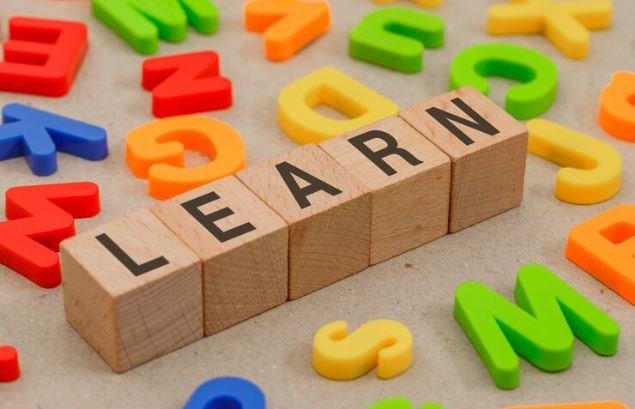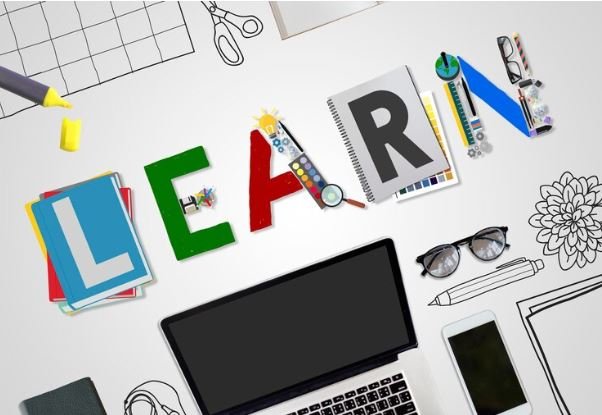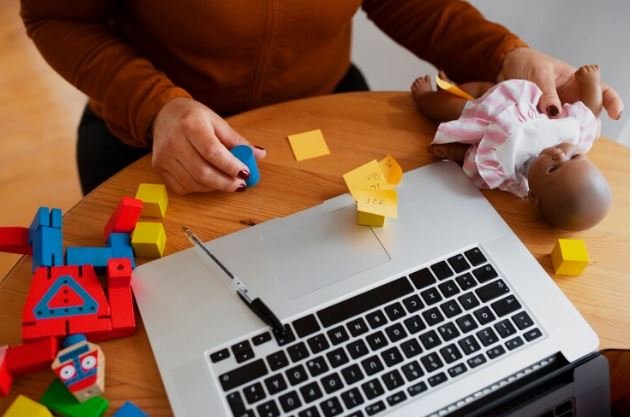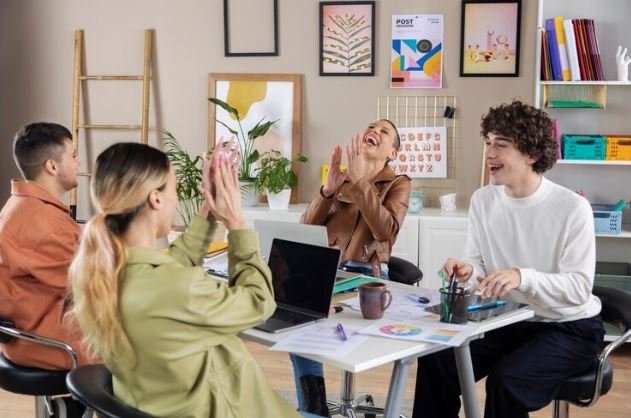Right from school-going kids to a person playing any game, listen to it said or maybe even say yourselves that every day is learned. So what makes learning work?
The characteristics of effective learning are the unique manners that can aid us in understanding things better, retaining what we have learned, and applying our new knowledge under different circumstances.
So much of what is learned isn’t only reading a book or hearing from an authority figure, it’s about active pursuit, discovery, and trying things out in novel ways. We would look at what learning well actually entails, why it matters, and how you can put these principles into action as an effective learner.
What Is Effective Learning?
Learning is not just about giving correct answers, but it’s also a source of enjoyment to understand the process behind learning. It requires you to be active rather than passive, thinking more critically as well as just follow impulsive reactions and use your knowledge both gather data following a problem.
It is then when you no longer keep and memorize silly facts based on some scattered logic, but truly understand why things work the way they do, how did it come to be this way (to your answer), the forces in play and how can you make use of that knowledge. If learning is effective, you will be curious about each next topic to keep going.

What is So Important About The Characteristics of Effective Learning?
The characteristics of effective learning enable us to improve our ability to make sense of and explore new ideas. We learn from these and then bring them with us into the way we approach learning creating a focus for priority setting, creative adaptation to tasks at hand, and confidence in intellectual rigor.
Once you know what it takes to learn effectively, then you can attempt these strategies at school, or even while exploring new things at home. Think of it like having a toolkit full of tools that make you the best learner possible.
Key characteristics of effective learning
Learning has unique qualities to make it effective. Knowing these parameters will help you prepare yourself for how to learn it, in terms of mindset and approach. All of with the following features:
Curiosity and Inquiry: Curiosity is one of the most powerful features for learning to work well. When you are curious, life wants to more about the world through your eyes.
If this is the response either way to a question, why would we assume that asking questions will stop us from even delving into our subjects and finding cool facts?
Unlike most people who take things for granted, you instead question and think “why” & “how”, hence leading to a clearer understanding of matters.
Testing / Experimentation: A lot of times, you learn best when you test the waters yourself. You know how to try new things without fear of trying ideas, messing up, and recouping.
Whether it be constructing or trying out a little science project for yourself, even testing your mind by solving some puzzles will lead to learning and education through experience.
Pay Attention and Stay in Focus: Concentration is another ingredient of effective learning. You will have a greater capacity to retain information This whole idea revolves back to paying attention.
By ignoring the other demands on your time, like tidying up toys or working out what happened in episode three of that new series you started watching last night. This way, getting involved will help you see some of the details that are key aspects when learning something new.
Learn to Learn: Good learners give a lot of thought to what they are learning. This property is termed reflection. Reflection means you think about, -What did I do today? (Knowledge), What have I learned and how can it improve me in the future? Reflection enables you to join up disparate ideas and apply them together.
Creativity and Thinking Imaginatively Creativity is a major reason why this type of learning works so well. Imagination is when you solve problems in creative ways, have original thoughts, or get a different perspective of something.
After having learned from another draw I would bracket what calls to action: Creativity is how enable you to take in and make an interpretation of that learning into fun, sudden courses.
Cherishing the Struggle — Refusing to Quit: I didn´t say learning is easy, it even might take a lot of effort sometimes. Enjoying the Challenge — In Effective Learning One of The Features means not quitting or wimping out on things when they get tough.
Instead, you keep attempting, and experimenting with different approaches until finally it’s figured out, and feel that tremendous sense of accomplishment.
Collaborating with others and Sharing Ideas: another proper way for efficient learning is through collaboration or working together. Regardless if you are working with friends or colleagues when it comes to solving problems do so TOGETHER! Group work is how you get multiple viewpoints on a subject, and it just makes learning that much more exciting.
Applying Knowledge Across Real-World Concepts: The news to be learned in all these is always about connecting what you are learning from different materials.
What this looks like is learning something in one context (a math lesson) and applying it to another (baking cookies, or a game). It demonstrates your learning to a collaboration and use case.
Have Confidence in Yourself: Being confident is essential for effective learning. You take more risks and attempt new things when you have belief in yourself. It is rooted in rehearsing, making mistakes but then figuring it out at last because you know that your brain can learn.

Applying the Characteristics of Effective Learning
So, you know what creates effective learning. What about how you can employ this to become an efficient learner too? This guide will help you apply these concepts:
Curious Everywhere: Curiosity not only in the classroom. When you are out playing, reading a book, or talking to family members- searching for times when they can ask their questions and learn more.
If you discover a cool bug, wonder about why it looks as it does. You wonder what theories of space travel are around the corner if you’re reading about space. Curiosity drives pleasure in learning
Practice Makes Progress– Get Out and try things! Experimentation is the essence of learning feel free to construct big Legos, even if they falter. You learn something about how to make it stronger every time you try. Practice makes perfect.
Be writing focused with mini goals: it can be very difficult to focus but setting small, digestible pieces for yourself may help you get the job done. Make mini-goals to read a chapter, do 1 problem for each of the questions, or draw something.
If you can do most of it once, that creates a large space for yourself and all the smaller things like focusing laser in on building your concentration methodically feel like victorious feats.
Remember: Reflect on what you learned Photograph by Kathrin Naas Did you enjoy it, was something tougher than expected, or did a different aspect come easy to you? Backwards planning allows you to reflect on what it was that got learned and how to prepare for next time.
Guess at/imagine: Be Creative in Learning. If you are working on something regarding a science experiment, consider making a funny video or drawing out comic lines. It makes learning fun and you start to see the topic in various ways.
Enjoy the Struggle: If what you are learning feels hard then figure it out like a puzzle. Challenge yourself, whether it be a difficult math problem or you want If they do their soft-fact-challenge themselves in different role play scenarios and game theory. Try again, and know that every mistake leads you one step closer to the correct answer.
Share & Collaborate: Learning doesn’t have to be a solitary endeavor. Communicate your work with friends, collaborate on projects together, and teach what you learn from each other.
Working together not only makes for a more social learning environment, it also encourages you to see how other people think and work through problems.
Employ Learning Everywhere: Implement the lessons learned from one area to another. Measurement: if you are using measurements in your class, have them do measuring. If you learned about weather patterns, watch the sky and try to determine if it will be a “rainy day”. It makes you visualize how valuable what you are learning is in the real world.
Confidence is developed with each small win Reward your success, however small it is, and know that a step forward always counts. The better you feel, the more likely you are to take on new challenges.

What Is The Importance Of Effective Learning
Knowing the traits of effective learning is vital because it makes your process better and more enjoyable. If education is successful, then it stops being just a practice of schoolwork and becomes an active mindset excited about question asking/testifying impersonating. These traits will make you an available lifelong learner eager to learn more, solve problems, and share ideas.
Learning properly will also develop skills outside of the classroom. It teaches you patience and creativity, it shapes your inner strength. It teaches you critical thinking and teamwork.
With these features at play, you are not just memorizing information but the focus is on learning to learn a skill that will stay with you through every stage of your life.
Frequently Asked Questions
What Does Curiosity Have to Do with Learning?
It spices up your learning, makes it interesting, and helps you dive deeper. Curiosity means you want to ask and get the answers which provide a better comprehension of that topic.
I want to be focused on learning.
Focusing long-term is also part of the challenge, and simplifying smaller focused goals can help with this. Divide tasks into small pieces and have short breaks to help keep your mind fresh.
How do I touch those moments when learning has gotten difficult?
See challenges as an avenue for learning and development. This guideline reveals the other Don’t fear making errors — it is how you learn. We tried and we asked for help.
How Does Creativity Help In Learning?
Innovation gives you the ability to look at new and improved ways of getting things done. You learn to reuse the knowledge you have in new ways, which makes it more engaging and enjoyable.
What makes learning with others an essential element of successful learning?
You can share your ideas, and learn others” points of view and you all should work together to make a solution. It encourages communication and lends credit to the idea that learning tends toward a collaborative process.
Do: Adopting the Hallmarks of Successful Learning
The characteristics of effective learning are a signpost, pointing the way to optimum teaching and maximum learning. You can learn something new in every moment through your focus, imagination, and tenacity if you are curious about it.
It is no secret why this makes one a better learner, whether in school or at home, you have the confidence and capability that whatever challenge comes your way Bring it on! And keep asking questions, trying new processes
. You are about to learn three key ingredients for becoming a great learner: practicing, taking ownership of learning behaviors within your control, and self-confidence now get ready!


